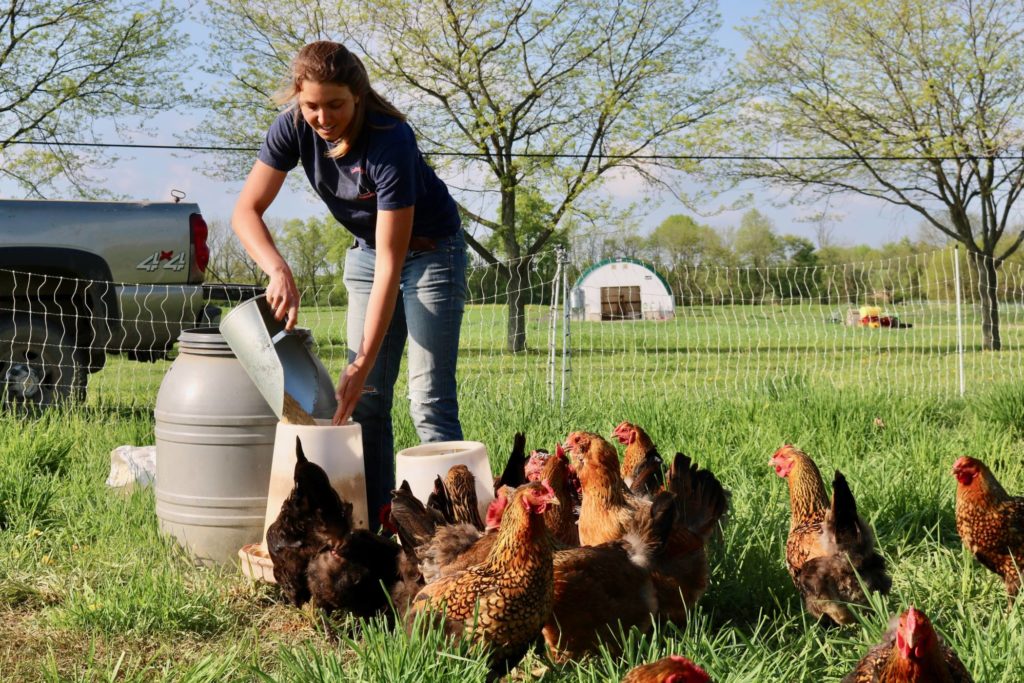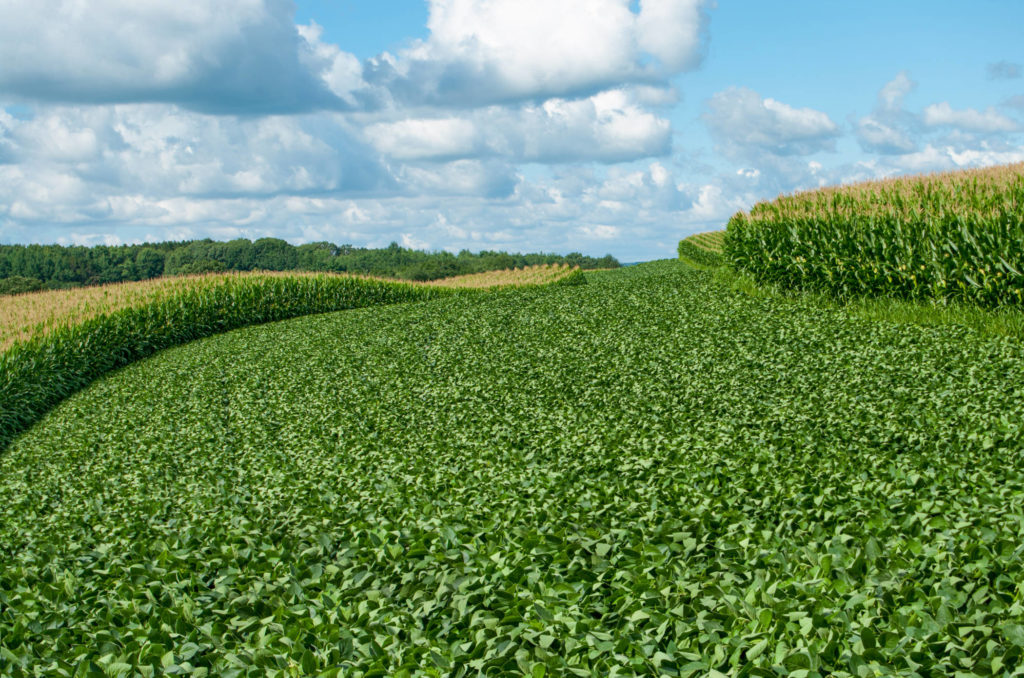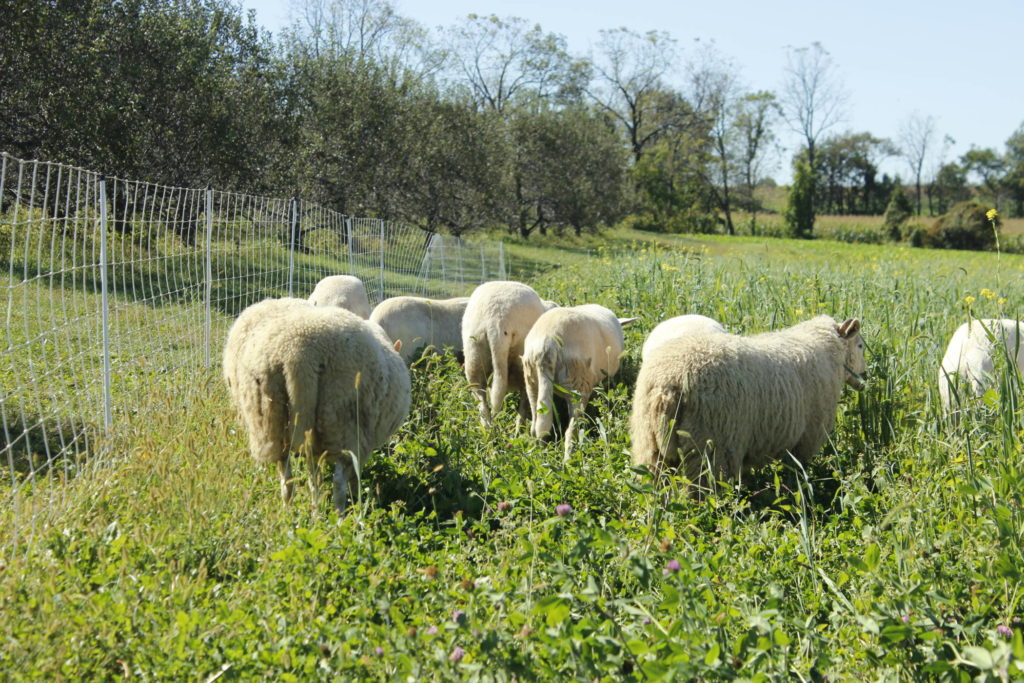Integrated Crop-Livestock Best Management Practices: What You Need to Know
What is integrated crop-livestock?
Integrated crop-livestock management is a type of mixed farming that can exist in many forms and scales depending on external and internal factors. External factors can include climate, weather, soil conditions, market prices and political stability, etc., while internal factors may include land access, equipment availability, a farm’s economic structure, and ingenuity. Historically, crops and livestock have been managed separately in the U.S. where one farm produces meat or dairy products for example, and another produces feed for the animals. Integrated crop-livestock management brings those two farms together so that all the products are produced at one location. This type of management system requires modifying current land use practices to incorporate animal and crop rotations.

What are the benefits for integrating crops and livestock?
- Reduce animal feed costs
- Utilize marginal lands
- Reduce labor
- Reduce machinery inputs
- Improve soil health
- Reduce tillage
- Increase farm biodiversity
- Additional weed management strategies
- Additional source for plant fertility
- Reduced pest problems
What crops and livestock can be integrated into one farm?
Ruminate animals such as cows, sheep and goats, and various avian species typically provide the smoothest transition to integrate livestock into current cropping systems. This is because these animals require pastures for growth and reproduction, which may be incorporated into existing crop rotation plans. Livestock can be incorporated into traditional grain crop rotations by adjusting rotation plans to include a livestock grazing period. Additionally, poultry livestock can be incorporated into vegetable operations during pre- or post-production to aid in weed and nutrient management.
Watch Integrating Crops & Livestock Webinar Now >>10 Best Management Practices
1. Identify land-use practices
Land suitable for crop production may not be consistent across a farm. Some land may not be suitable for crop production due to soil conditions, soil type, topography, etc., but may be suitable for grazing and raising livestock. It’s important to identify which areas are best suited for crop or livestock production or a combination of both. This will help develop rotation plans for integrating crops and livestock. It is also important to consider sensitive areas such as wetlands that may not be suitable for crops or livestock due to concerns with water contamination or other environmental hazards.
2. Plan your crop-livestock rotation
There are many factors that contribute to planning a crop-livestock rotation including flock or herd size, crop species, acreage, time of year the crop gets planted, and when it can be grazed. Begin planning before planting and establish when to graze, how heavily, anticipated stocking rate and when the herd should be finished with that specific pasture.

3. Be conscious of stocking rate
The stocking rate of animals refers to the number of animal pounds per unit area. There are many different strategies for managing stocking rate. Typically, livestock management increases as more animals are placed per acre but labor per livestock unit decreases. Too many animals per acre may result in soil degradation while too few may result in increased management resulting from uneven weed and fertility distribution. Finding the right balance may take trial and error on a specific farm as climatic and soil factors may dictate stocking rate. In some cases, multiple livestock species can forage together efficiently since they consume different things (Ex: cows-grass, chickens-insects), prefer different plants, or different parts of the same plant.
4. Select pasture type for optimal grazing
The type of pasture will vary depending on the type of livestock. For example, cattle are ruminate animals that can easily digest grass species while pigs are monogastric animals that lack the ability to digest grass but instead prefer a diversity of other plant species such as clover, alfalfa, brassicas, etc. For pigs and poultry additional feed may be necessary since they may not be able to get all their nutrition from pasture or field crops, but the goal is to reduce the amount of additional feed needed.
5. Fencing
Fencing is a critical component for integrated crop-livestock management. Fencing can be either permanent or temporary depending on the type of livestock. Permanent fencing can be established along the perimeter of fields and farms while temporary fencing can be used to create individual paddocks for grazing within a pasture.

6. Move livestock frequently
Livestock that are raised almost exclusively on pasture require movement from one area to another in order to provide the necessary nutrition for growth and reproduction. Additionally, frequent movement of animals prevents destruction of pastures and permits regrowth. The rate of movement depends on the type of animal, type of pasture, stocking rate, and weather conditions. Careful inspection of fields is necessary and in some cases is a learned skill. A general rule of thumb is leave 4 inches of vegetation or allow animals to take just one bite from a plant since that is the most nutritious and allows rapid plant regrowth.
7. Encourage plant regrowth from grazed pastures
The rate pastures are grazed and consumed depends on the type of pasture and livestock. In areas where pasture regrowth is necessary for future grazing, temporary fencing can be established to restrict livestock, a technique known as back-fencing. This will prevent animals from over-grazing and permit pasture regrowth.
8. Provide fresh water access
Fresh water is essential for all livestock management. Animals that are provided with limited or contaminated water can develop health issues that ultimately lead to reduced growth and reproduction. Test water source annually to ensure your water is of highest quality and clean water tanks or buckets routinely.

9. Weather aware
During summer months, heat may cause unnecessary stress on your livestock and decrease health and production. The same applies in the winter where wind and low temperature stress can lead to excess calories being burned to maintain warmth instead of growth. These stress factors can also lower immunity and cause them to be more susceptible to a variety of illnesses.
10. Maintain farmer economic viability
There are many ways to incorporate livestock into your system from a full cow-calf to purchasing in feeder calves to finish on farm. Some models may be more economically viable for a specific farm than others.
LEARN ABOUT OUR CROP LIVESTOCK INTEGRATION STUDY >>